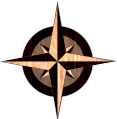. . . Early in June 1867 my parents, my little sister Mary, then about two years old and myself left Denmark for America. From Liverpool we sailed on the steamship Manhattan. This was the first time that a large party of Mormon emigrants had used a steamer to cross the Atlantic.
My father was a well-to-do landowner in Denmark and he aided twenty one other persons to get to Utah. Some he helped for the entire distance and some for a least a part of the journey.
On the journey across the ocean we traveled in the steerage. About 400 English emigrant converts joined us at Liverpool. Unlike most of the early day emigrants who required many weeks on the ocean we had a rapid trip requiring only 13 days. There were only about two days of rough sea, the rest of the time being very pleasant. I recall that one stormy morning I awoke unable to find my clothing and shoes. The pitching of the ship had tossed my apparel out of the bunks and down the aisles and I had to recover my belongings from a heap of clothing piled at one end of our quarters.
We arrived in New York harbor on July 4, 1867. The cannons were booming [p.24] and the usual celebration was in progress. The following day after we had been examined and released from quarantine we went ashore at old Castle Garden. There I tasted my first American pie. It was cherry and full of seeds. Like Edward Bok who has written on his early American experiences, my first impression was that there was more stones than fruit.
Next we embarked on a river steamer and journeyed up the Hudson to Albany. Our first ride in this new country was very enjoyable. All day and as long as light lasted my father and I stood out on deck watching the beautiful scenery and marveling at the fine homes and gardens in the pleasant green valleys along the river.
From Albany we traveled to Buffalo and there we 'camped' in a large warehouse. The immensity of the building impressed me and I thought it was a queer way to camp, all the families in one big room. There I suffered a great disappointment. Most of the older persons went over to Niagara, a short distance away, to see the falls and being only 10 I had to go to bed early. I cried, bitterly. It was many, many years later, in 1893, when I was on a trip back to Europe with Mr. Eccles, at the time of the Chicago World's Fair, that I had a chance to see Niagara Falls.
Next we took a train to St. Joseph, Missouri and from there we went by river steamer up the Missouri to Council Bluffs. There father bought his outfit and helped many others purchase theirs. There were several returning missionaries in our party.
The Union Pacific Railroad at that time had built as far west as North Platte, Nebraska and father learned that for $10 fare each we could ride from Omaha to the end of the line and wait there for the wagons to arrive.
The railroad equipment was very poor at that time and I recall we sat on benches without backs. The cars, having no springs, rattled and jolted us over the newly built roadway. I got tired and wished to sleep so I stretched [p.25] out on the floor under the seats. I remember the conductor kicking my feet that had sprawled out into the aisle.
We had to wait three or four weeks at North Platte before the outfits arrived. There were about 600 or 700 persons in the emigrant train, in charge of Captain Leonard G. Rice. Our company was the first large independent company of converts to come to Utah. Up to this time the church had always sent wagons and teams and other assistance to companies crossing the plains but not this year no aid was forthcoming. . . . [p.26]
. . . We traveled up the Platte River, then up the Sweetwater and over South Pass, down to Fort Bridger and then through Echo Canyon, and over the mountain to Emigration Canyon and down to Salt Lake City, arriving there October 5, 1867, just at conference time. [p.28]
BIB: Eccles, Bertha Marie Jensen, [Autobiography], "Utah Pioneer Biographies," vol. 9, pp. 24-26, 28. (FHL)
(source abbreviations)
 Saints by Sea
Saints by Sea